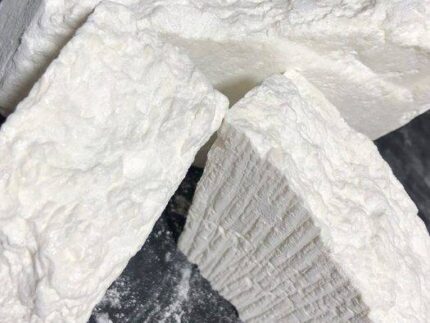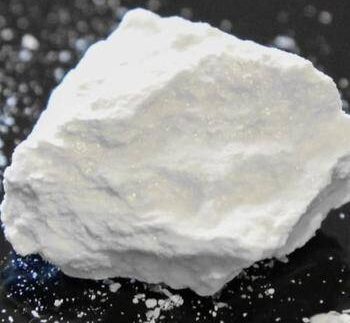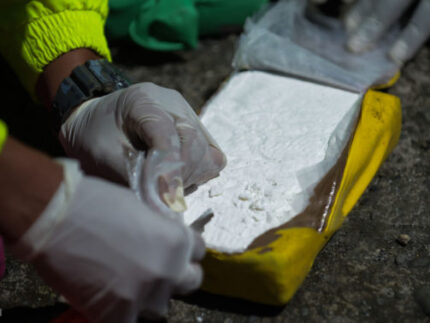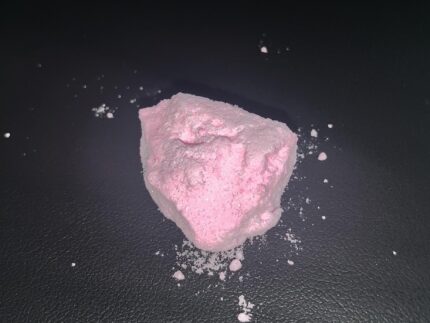Introduction to the Impact of Cocaine in Pop Culture | how long does cocaine stay in system drug test | how long will cocaine last in gcms drug test | how long does cocaine show in drug test
Cocaine, a powerful and highly addictive stimulant, has had a significant impact on pop culture throughout the years. From its depiction in movies and television shows to its references in music and art, cocaine has become a prevalent theme in our society. One of the most interesting aspects of this impact is the rise of viral GIFs and memes related to cocaine.
These short animated images and humorous captions have become a way for people to express their fascination and sometimes even their admiration for this illicit drug. In this article, we will delve into the world of cocaine in pop culture, exploring its various forms, effects, and the dangers associated with its use.
The Rise of Viral GIFs and Memes Related to Cocaine | how to pass a urine drug test for cocaine
In recent years, the internet has become a breeding ground for viral GIFs and memes related to cocaine. These short, often humorous, animations and images have spread like wildfire across social media platforms, capturing the attention of millions. From the iconic "cocaine is a hell of a drug" GIF to the countless memes featuring celebrities and fictional characters snorting lines of white powder, these viral creations have become a part of our digital landscape.
While some may see these GIFs and memes as harmless entertainment, it is important to recognize the underlying message they convey. By making light of cocaine use, they can perpetuate a dangerous and glamorized image of the drug, potentially leading to its normalization among impressionable individuals. It is crucial to understand the real-life consequences of cocaine use and the detrimental effects it can have on both individuals and society as a whole.
Understanding the Different Forms and Effects of Cocaine | how long cocaine drug test | how long does cocaine show up on a drug test | how long does cocaine stay in your system for drug test
Cocaine, derived from the coca plant, comes in various forms, each with its own method of use and effects on the body. The most common form is a white powder, which is typically snorted through the nose. This method allows the drug to be rapidly absorbed into the bloodstream, resulting in an immediate and intense high. Another form of cocaine is crack cocaine, which is created by processing the powder with baking soda and water. This form is typically smoked, leading to a more rapid and intense high compared to powder cocaine.
Regardless of the form, cocaine affects the brain by increasing the levels of dopamine, a neurotransmitter associated with pleasure and reward. This surge of dopamine creates a euphoric sensation, leading to feelings of increased energy, confidence, and alertness. However, these effects are short-lived, and the crash that follows can be severe, causing feelings of depression, anxiety, and irritability. Prolonged use of cocaine can lead to a range of physical and mental health issues, including heart problems, respiratory issues, and addiction.
Cocaine as a Designer Drug and Its Illegal Status | how long does cocaine show on a drug test | at home cocaine drug test | home drug test for cocaine
Cocaine is often referred to as a designer drug, a term used to describe substances that are created by altering the chemical structure of existing drugs. While cocaine itself is a powerful stimulant, it is frequently combined with other substances to create even more potent and dangerous drugs. One such example is "bath salts," a synthetic cathinone that is chemically similar to cocaine. These designer drugs are often marketed as legal alternatives to illicit substances, but they can have devastating effects on the user's health and well-being.
Despite its popularity and prevalence, cocaine is classified as an illegal drug in most countries, including the United States. The possession, distribution, and use of cocaine are criminal offenses, punishable by law. The illegal status of cocaine is due to its highly addictive nature and the numerous risks and dangers associated with its use. Law enforcement agencies and government bodies have implemented strict measures to combat the production and distribution of cocaine, but the demand for this illicit substance continues to persist.
The Dangers and Risks Associated with Cocaine Use | pink cocaine drug |
While the viral GIFs and memes may make cocaine use seem glamorous and exciting, the reality is far from it. Cocaine is a highly addictive drug that can have severe consequences for both the individual using it and those around them. The immediate effects of cocaine use include increased heart rate, elevated blood pressure, and dilated pupils. As the high wears off, users may experience irritability, paranoia, and intense cravings for more cocaine.
Long-term cocaine use can lead to a variety of physical and mental health problems. The cardiovascular system is particularly at risk, with cocaine use increasing the likelihood of heart attacks, strokes, and other heart-related issues. Respiratory problems, such as lung damage and chronic cough, are also common among long-term users. Additionally, cocaine use can have a profound impact on mental health, often leading to anxiety disorders, depression, and psychosis.
Cocaine Drug Testing and How to Pass a Drug Test | cocaine in drug testing | cocaine drug tests urine
Given the illegal status and the dangers associated with cocaine use, drug testing for this substance is common in various settings, including workplaces, schools, and athletic competitions. There are several methods used to detect the presence of cocaine in the body, including urine, blood, saliva, and hair tests. These tests can detect the presence of cocaine and its metabolites, which are the byproducts produced when the body breaks down the drug.
If you find yourself faced with a cocaine drug test, it is important to know how to pass it. While there are numerous detox products and methods available on the market, many of them are ineffective and unreliable. The best way to pass a drug test for cocaine is to abstain from using the drug entirely.
Cocaine can typically be detected in urine for up to 72 hours after use, but it may be detectable for longer periods in blood, saliva, and hair samples. It is crucial to consult with a medical professional or drug testing expert for accurate information and advice regarding drug testing and how to pass a cocaine drug test.
The Classification of Cocaine as a Schedule 1 Drug
Cocaine is classified as a Schedule 1 drug in the United States, meaning it is considered to have a high potential for abuse and has no currently accepted medical use. This classification places cocaine in the same category as other illicit substances such as heroin and LSD. The Schedule 1 classification also means that the production, distribution, and possession of cocaine are strictly regulated and illegal.
The classification of cocaine as a Schedule 1 drug reflects the significant risks and dangers associated with its use. The highly addictive nature of cocaine and its potential for causing physical and psychological harm make it a substance of great concern. While there have been discussions and debates surrounding the potential medical benefits of cocaine, its current legal status prohibits any legitimate medical use.
The Duration of Cocaine in the System and Its Detection Methods
Cocaine can remain detectable in the body for varying lengths of time, depending on the type of drug test used. In urine tests, cocaine can typically be detected for up to 2-4 days after use, although heavy and prolonged use may extend this detection window. Blood tests can detect cocaine for a shorter period, usually within 24 hours after use. Saliva tests can detect the presence of cocaine for up to 1-2 days, while hair tests can detect its presence for up to 90 days or even longer.
The detection methods used for cocaine vary depending on the purpose of the test and the desired detection window. Urine tests are the most common method due to their ease of use and relatively low cost. Blood tests are often used in medical settings or forensic investigations, while saliva and hair tests are less common but may be employed in specific situations. It is important to note that the accuracy and reliability of these tests can vary, and false positives or false negatives are possible. It is always best to consult with a medical professional or drug testing expert for accurate information regarding cocaine detection methods.
Exploring the Cultural References and Memes Related to Cocaine
Cocaine has permeated our pop culture in various ways, and the internet is no exception. The rise of viral GIFs and memes related to cocaine has provided a platform for people to express their fascination and opinions about the drug. From humorous depictions of celebrities to satirical commentary on society, these cultural references and memes offer a window into the complex relationship between cocaine and our culture.
One of the most famous examples of a viral GIF related to cocaine is the phrase "cocaine is a hell of a drug." Originating from a sketch on the television show "Chappelle's Show," this GIF has become synonymous with the allure and dangers of cocaine. It has been used in countless online conversations and has even been remixed and parodied in various forms of media.
While these cultural references and memes may seem harmless, it is important to approach them with caution. The glamorization and normalization of cocaine through these viral creations can perpetuate dangerous misconceptions about the drug. It is crucial to separate the fictionalized depictions from the harsh reality of cocaine addiction and the devastating impact it can have on individuals and society.
The Lasting Impact of Cocaine in Pop Culture and Society
Cocaine has left an indelible mark on our pop culture and society. From its portrayal in movies and music to its presence in viral GIFs and memes, this illicit drug has become a prevalent theme in our collective consciousness. However, it is vital to remember that the impact of cocaine goes far beyond the realm of entertainment and online trends.
Cocaine is a highly addictive substance that can have severe consequences for individuals and communities. The dangers and risks associated with its use are real and should not be taken lightly. It is crucial to approach the topic of cocaine with a clear understanding of its effects and the potential harm it can cause.
As we navigate the ever-evolving landscape of pop culture, let us strive to separate the glamorized portrayals of cocaine from the reality of its destructive nature. By educating ourselves and promoting awareness, we can work towards a society that recognizes the dangers of cocaine and supports those affected by its devastating impact.


















